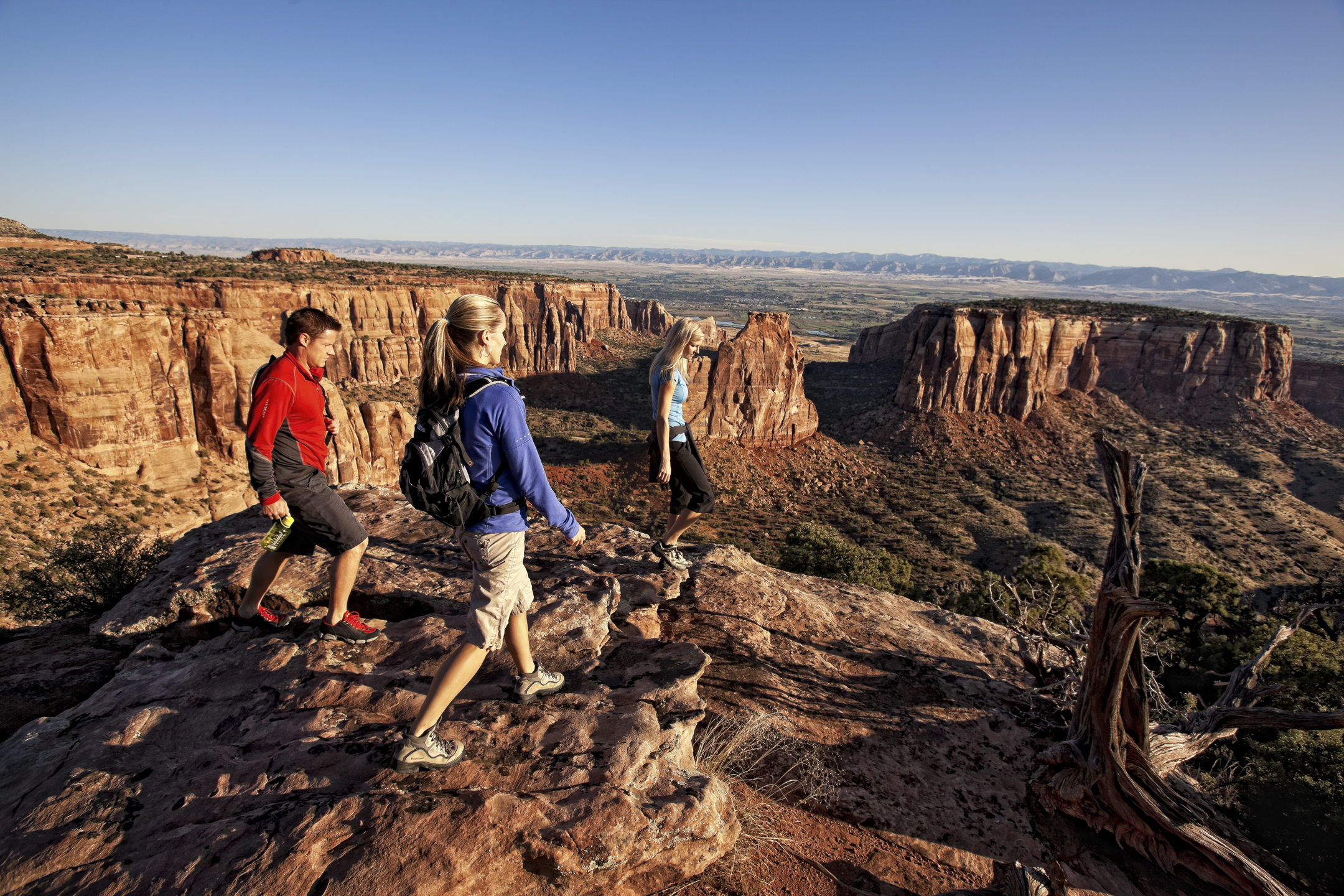Heading out- Moab? No…Grand Junction!

We have all heard of and love Moab, it is a beloved spot for bikers, hikers and campers alike. A growing destination once overlooked is the Grand Valley. This sunny, warm locale is a mecca for Colorado hiking and biking. The Grand Valley offers more than 150 hiking trails and more than 500 miles of single-track and multi-use trails. It’s geographical location makes the Grand Valley region diverse and unique. The real challenge becomes selection and preference. How does one choose? Barb Bowman, Division Manager for the Grand Junction Convention and Visitor Bureau offers some suggestions on how visitors can find the right trail for them – close-in or more remote, short or long, on foot or on a bike.
- In town. The relatively flat Colorado Riverfront Trail meanders for more than 18 miles through the City of Grand Junction, past picnic grounds, botanical gardens, protected wetlands and a fishing pier. The trail is popular with walkers as well as mountain and road cyclists.
- Up high. More than 40 miles wide, the Grand Mesa is one of the world’s largest flat-topped mountains. At 10,000 feet, more than 200 miles of hiking and mountain biking trails wind through aspen and spruce groves, flowered meadows and lakes. Road cyclists covet the challenge of the 7,000-foot climb from the valley floor to the top of the mesa.
- At a national monument. Sitting 2,000 feet above the City of Grand Junction, the monument is perched on the northern lip of the Uncompahgre Plateau. The spectacular red cliffs and winding canyon trails of Colorado National Monument provide jaw-dropping views along 41 miles of hiking trails. Road cyclists flock to the popular, challenging 23-mile Rim Rock Drive ride, which joins with connecting roads outside the monument for a grand loop of 33 miles.
- During lunch. The trailhead to the Tabeguache Trail is located just outside the east entrance of the Colorado National Monument. Located just a few miles from downtown Grand Junction, the trail is easy to access – giving the nearly one dozen rides along it the names, “Lunch Loops.” The area is popular with hikers and bikers, though the latter have the higher areas mostly to themselves.
- Off the beaten path (hiking). The 122,300-acre McInnis Canyons National Conservation Area is still a well-kept hiking secret. The easy, 1.5-mile Trail through Time takes hikers past an active dinosaur quarry and offers a look at the landscape of 150 million years ago. Good bets for stunning and more solitary hikes, amidst the Colorado Plateau’s rugged sandstone canyons, natural arches, spires and alcoves, include:
- Pollock Bench Trail: The 11-mile round-trip trail accesses the Pollock Canyon as well as Rattlesnake Canyon/Rattlesnake Arches trail. The moderate-to-strenuous hike features spectacular scenery, extensive canyons, and the second-largest concentration of natural arches in the country (Rattlesnake Canyon).
- Fruita Paleo Area: Just west of Grand Junction, a loop trail through the 360-acre Fruita Paleo Area features interpretive signs describing the landscape as it existed 150 million years ago – when dinosaurs and other Jurassic vertebrates roamed there. The world-class fossil site contains a prolific record of Jurassic microvertebrates exposed in deeply dissected Morrison badlands.
- Devil’s Canyon Trails: The well-marked system of trails, leading through stunning sandstone canyon, is marked by pinon and juniper trees in the uplands, and cottonwood trees in the canyons. Hikers will see overlooks of the Grand Valley, Devil’s Canyon and the Flume Creek Canyon.


